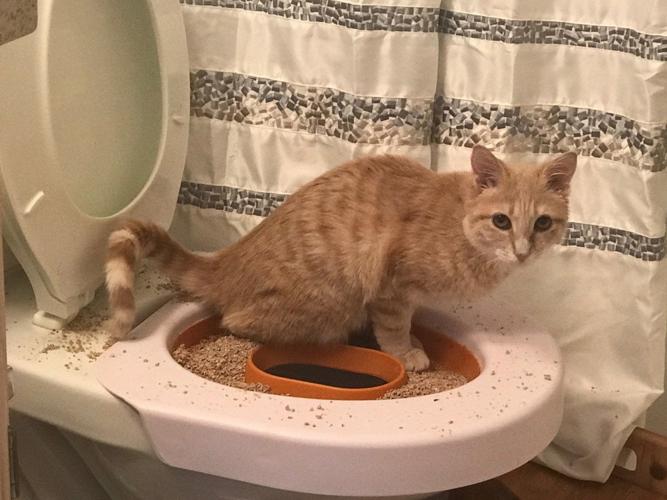Avoid Flush Cat Poop Down Your Toilet - Safeguard Your Pipes Infrastructure
Avoid Flush Cat Poop Down Your Toilet - Safeguard Your Pipes Infrastructure
Blog Article
Do you find yourself trying to find tips on How to Dispose of Cat Poop and Litter Without Plastic Bags?

Intro
As cat proprietors, it's important to be mindful of exactly how we take care of our feline close friends' waste. While it may seem practical to purge pet cat poop down the toilet, this practice can have harmful consequences for both the atmosphere and human wellness.
Alternatives to Flushing
Fortunately, there are much safer and a lot more liable ways to deal with feline poop. Think about the adhering to alternatives:
1. Scoop and Dispose in Trash
The most common approach of dealing with pet cat poop is to scoop it right into a naturally degradable bag and throw it in the trash. Be sure to use a dedicated litter scoop and dispose of the waste quickly.
2. Use Biodegradable Litter
Opt for biodegradable feline trash made from products such as corn or wheat. These trashes are environmentally friendly and can be securely taken care of in the garbage.
3. Hide in the Yard
If you have a lawn, consider burying pet cat waste in a marked location away from veggie gardens and water sources. Make sure to dig deep enough to avoid contamination of groundwater.
4. Set Up a Pet Waste Disposal System
Invest in an animal waste disposal system especially created for cat waste. These systems utilize enzymes to break down the waste, decreasing smell and environmental influence.
Wellness Risks
In addition to environmental concerns, purging pet cat waste can likewise position health and wellness risks to humans. Pet cat feces may contain Toxoplasma gondii, a bloodsucker that can trigger toxoplasmosis-- a potentially extreme disease, particularly for expecting women and people with weakened body immune systems.
Ecological Impact
Flushing cat poop presents hazardous virus and bloodsuckers right into the water system, positioning a significant danger to marine ecological communities. These contaminants can negatively impact aquatic life and compromise water quality.
Verdict
Responsible animal possession extends beyond supplying food and shelter-- it additionally involves correct waste management. By avoiding flushing pet cat poop down the commode and opting for alternative disposal methods, we can minimize our ecological impact and protect human wellness.
Why Can’t I Flush Cat Poop?
It Spreads a Parasite
Cats are frequently infected with a parasite called toxoplasma gondii. The parasite causes an infection called toxoplasmosis. It is usually harmless to cats. The parasite only uses cat poop as a host for its eggs. Otherwise, the cat’s immune system usually keeps the infection at low enough levels to maintain its own health. But it does not stop the develop of eggs. These eggs are tiny and surprisingly tough. They may survive for a year before they begin to grow. But that’s the problem.
Our wastewater system is not designed to deal with toxoplasmosis eggs. Instead, most eggs will flush from your toilet into sewers and wastewater management plants. After the sewage is treated for many other harmful things in it, it is typically released into local rivers, lakes, or oceans. Here, the toxoplasmosis eggs can find new hosts, including starfish, crabs, otters, and many other wildlife. For many, this is a significant risk to their health. Toxoplasmosis can also end up infecting water sources that are important for agriculture, which means our deer, pigs, and sheep can get infected too.
Is There Risk to Humans?
There can be a risk to human life from flushing cat poop down the toilet. If you do so, the parasites from your cat’s poop can end up in shellfish, game animals, or livestock. If this meat is then served raw or undercooked, the people who eat it can get sick.
In fact, according to the CDC, 40 million people in the United States are infected with toxoplasma gondii. They get it from exposure to infected seafood, or from some kind of cat poop contamination, like drinking from a stream that is contaminated or touching anything that has come into contact with cat poop. That includes just cleaning a cat litter box.
Most people who get infected with these parasites will not develop any symptoms. However, for pregnant women or for those with compromised immune systems, the parasite can cause severe health problems.
How to Handle Cat Poop
The best way to handle cat poop is actually to clean the box more often. The eggs that the parasite sheds will not become active until one to five days after the cat poops. That means that if you clean daily, you’re much less likely to come into direct contact with infectious eggs.
That said, always dispose of cat poop in the garbage and not down the toilet. Wash your hands before and after you clean the litter box, and bring the bag of poop right outside to your garbage bins.
https://trenchlesssolutionsusa.com/why-cant-i-flush-cat-poop/

I found that blog posting on Don’t flush cat feces down the toilet when doing a search on the internet. Be sure to set aside a second to distribute this write-up if you appreciated it. I thank you for reading our article about Can You Flush Cat Poo or Litter Down the Toilet?.
Schedule Service Report this page